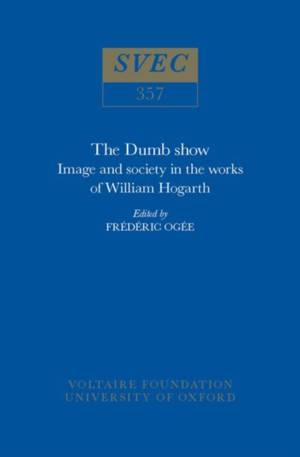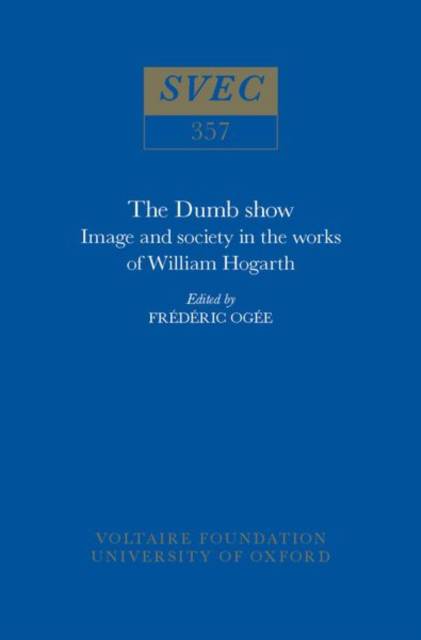
- Afhalen na 1 uur in een winkel met voorraad
- Gratis thuislevering in België vanaf € 30
- Ruim aanbod met 7 miljoen producten
- Afhalen na 1 uur in een winkel met voorraad
- Gratis thuislevering in België vanaf € 30
- Ruim aanbod met 7 miljoen producten
Zoeken
Dumb Show
Image and Society in the Works of William Hogarth
€ 83,95
+ 167 punten
Omschrijving
During the first half of the eighteenth century in England the 'forces of progress' became increasingly conservative as their grip on power was confirmed. Hogarth's position as the promoter of an authentically English art was therefore ambiguous, considering his origins, the intellectual milieu in which he moved, and the necessity he was under of defending his endeavours against attacks from all sides. The essays in this volume examine this ambiguity, and draw a composite picture of an exceptionally gifted artist, whose social and artistic involvement engaged him in a permanent search for the 'line of beauty', which he found only in a progressive weaving between centre and margins. In pictorial terms, this ambivalence may well account for the 'dramatic' proliferation which is one of the most remarkable characteristics of Hogarth's art. His 'stage', where his men and women, his 'players', were to 'exhibit a dumb show', was a busy crossroads of ideas and influences. The richness and ambivalence of his pictures result from his boldest artistic originality: his adoption of a polycentric stage, on which the 'dumb show' exhibited by his 'players' offers concomitant areas of meaning. Moreover, they invite the beholder to a serpentine act of deciphering and verbalisation which the essays in this volume both describe and materialise. Each from a different perspective - social, artistic, formal, philosophical - explores the characteristics and raison d'etre of that polycentrism in Hogarth's art. Linked thematically to each other, the essays combine to assess the true nature of Hogarth's variety and show the critical consequences of its essential ambivalent sinuosity.
Specificaties
Betrokkenen
- Uitgeverij:
Inhoud
- Aantal bladzijden:
- 301
- Taal:
- Engels
- Reeks:
Eigenschappen
- Productcode (EAN):
- 9780729405546
- Verschijningsdatum:
- 1/01/1997
- Uitvoering:
- Hardcover
- Formaat:
- Genaaid
- Afmetingen:
- 164 mm x 240 mm
- Gewicht:
- 659 g

Alleen bij Standaard Boekhandel
+ 167 punten op je klantenkaart van Standaard Boekhandel
Beoordelingen
We publiceren alleen reviews die voldoen aan de voorwaarden voor reviews. Bekijk onze voorwaarden voor reviews.










